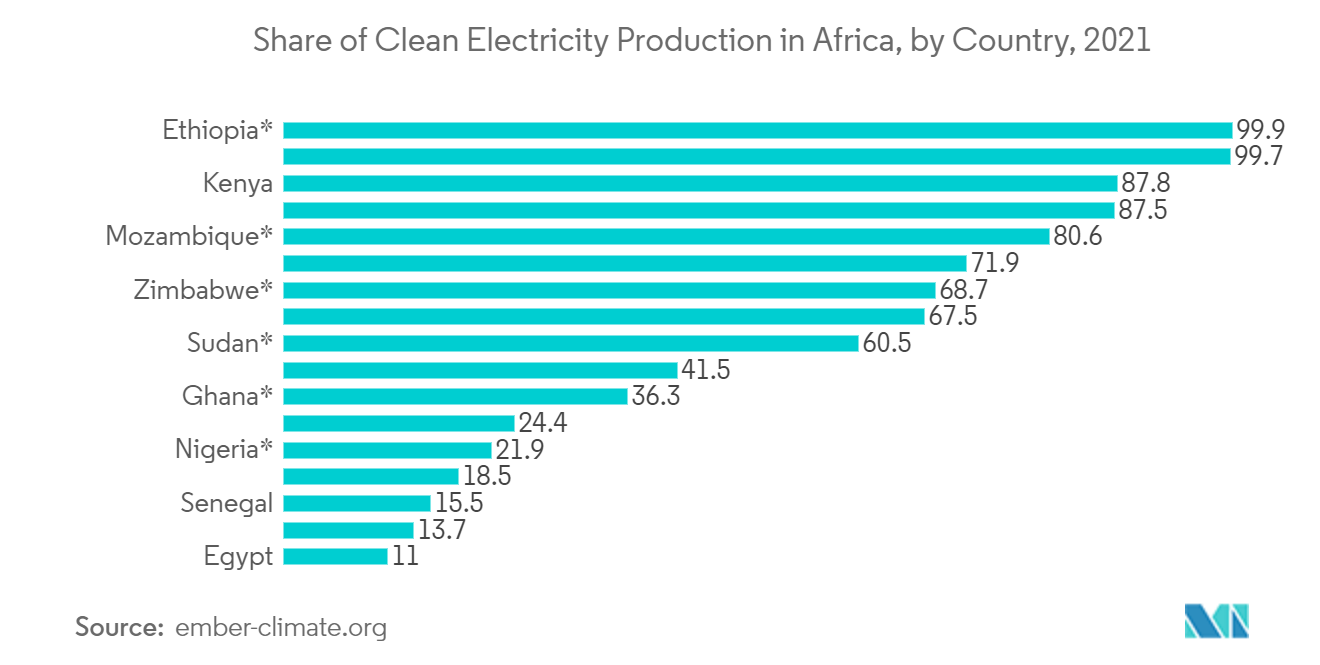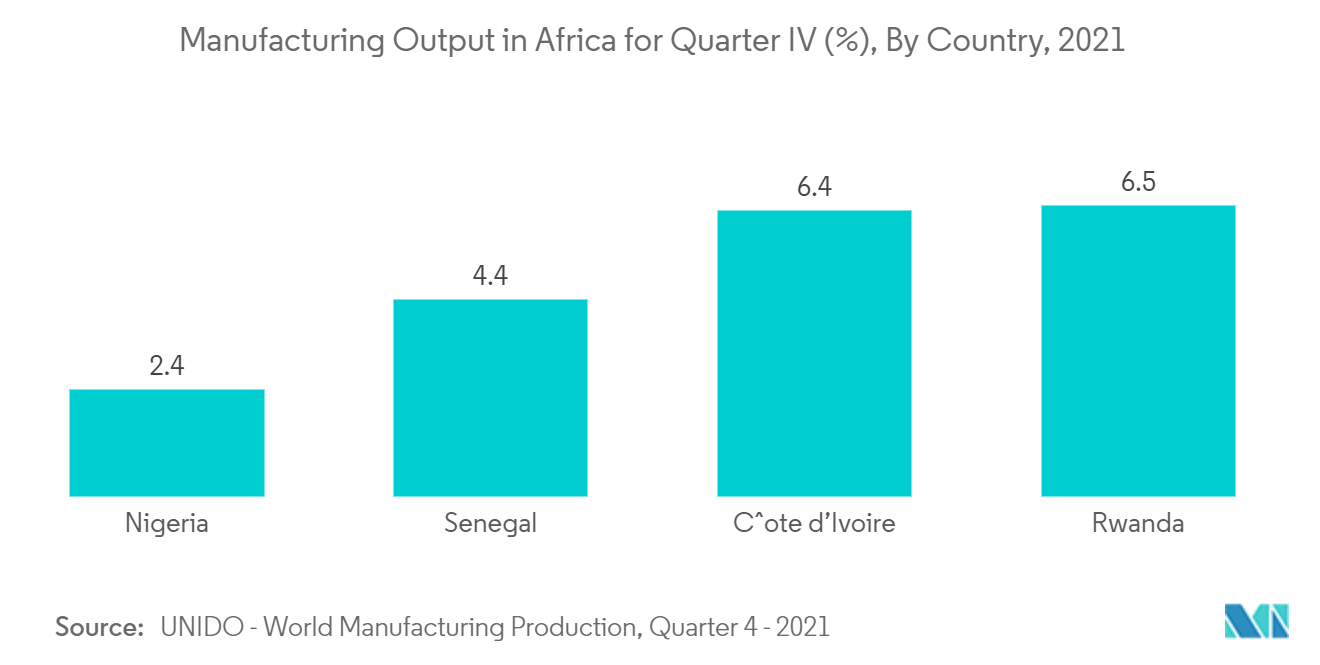Market Trends of Africa LED Lighting Industry
This section covers the major market trends shaping the Africa LED Lighting Market according to our research experts:
Government Initiatives and Growing Infrastructure Driving the Market
- The governments are constantly taking measures toward eliminating harmful light sources like Mercury, which is used widely in the region. When disposed of in the environment, Mercury might produce toxic vapors that may be fatal as they enter the food chain with time. For instance, to tackle this, the governments came up with the Clean Lighting Coalition, a team of technical experts, advocates, and industry stakeholders aiming to eliminate the exemptions for Mercury in lighting products under the Minamata Convention. Such measures pave the way for LED lighting solutions to reach the masses.
- The health care infrastructure in Africa needs to be developed at a high rate, which was majorly highlighted during the pandemic. According to afdb.org, despite 15% of the world population residing in Africa, African citizens account for 50% of the global deaths from communicable diseases. Organizations like the African Development Bank Group are forming strategies like Strategy for Quality Health Indfratrucsture in Africa, coordinating with the region's governments for upscaling the healthcare infrastructure. Such developments will create enormous demands for lighting solutions to manage the energy better and contribute to overall growth.
- According to the world bank, the growth of the economy estimated GDP in Western and Central Africa will be at 3.6% in 2022. The subregion is also expected to project a growth rate of 5.3% in 2022, compared to the 4.5% in 2021. Despite the COVID impact, the regions will display significant economic growth, attracting better industrial and urban infrastructure development. This would create the need for efficient and cleaner lighting solutions, paving the way for LED lighting. The promising growth would attract investors to establish and expand the LED lighting manufacturing facilities.
- Load shedding is a common hurdle in different parts of the African continent. The issue hampers the growth of most African industries, including LED demand and manufacturing. Several government initiatives are trying to promote energy-efficient appliances like LED. For instance, according to engineeringnews.co.za, South Africa is observing the Department of Mineral Resources and Energy (DMRE) and the South African National Energy Development Institute (SANEDI) developing minimum energy performance standards (MEPS) for streetlights. The MEPS is expected to boost efficiency and increase the adoption of high-quality lighting products for the regulators to ensure that the products meet certain criteria related to energy performance.
- Many organizations are working closely with the government and other private groups to expand the electrical grid across several untouched African regions. According to Power Africa, two out of three humans lack electricity in sub-Saharan Africa. Power Africa and USAID contribute to providing a grant of USD 2.8 million for delivering reliable and renewable health electricity to more than 220 health facilities, benefitting more than two million people in nine countries. Such measures of active electrification, with people's and private sectors' focus on energy efficiency, make LED lighting solutions indispensable in Africa's coming times, promising high growth.

Demand for Industrial LED Products Drive the Market
- The African region is bound to witness an industrial revolution like the 1980s in the coming years. The region will welcome new facilities and manufacturing units for businesses of different sizes belonging to various sectors. This would generate enormous demand for extensive installation of LEDs since LEDs mark a viable, economical, and energy-efficient light source for preference in a large-scale installation.
- The income levels and employment have increased, the critical indicators of increasing industrialization in Sub-Saharan Africa (SSA). The size of the workforce has expanded in the recent decades, with the new firms driving the job creation, accelerated by low wages. Although the scope for job growth at low wages has declined, the increasing industrialization is not hidden, pacing the way for lighting solutions to get a significant push.
- An increasing number of businesses and companies are looking forward to becoming a part of the Global Value Chain (GVCs) by promoting in-house manufacturing and exporting products and services. The companies are exploring the role of policies in entering the supply chains. Many companies have canceled the orders and contracts with external sources to promote local trade. For instance, Ghana canceled the agreement signed with the Beijing Everyway Traffic and Lighting Techn company. The company had undertaken a project to develop an intelligent traffic management system for the country. Such projects not only strengthen the local economy but also create employment and opportunities for lighting solutions like LED.
- Countries welcome LED manufacturing projects, as most industrial applications demand energy-saving, efficient lighting alternatives. For instance, according to africanminingmarket.com, in May 2022, Liebherr-Africa opted for BEKA Schréder's Ecobay LED solutions to light up their crane facility in Springs near Johannesburg. The Ecobay LED units are designed and manufactured in South Africa. Such installations offer a mutual benefit of sales and power efficiency, leading the region in a constructive direction.

